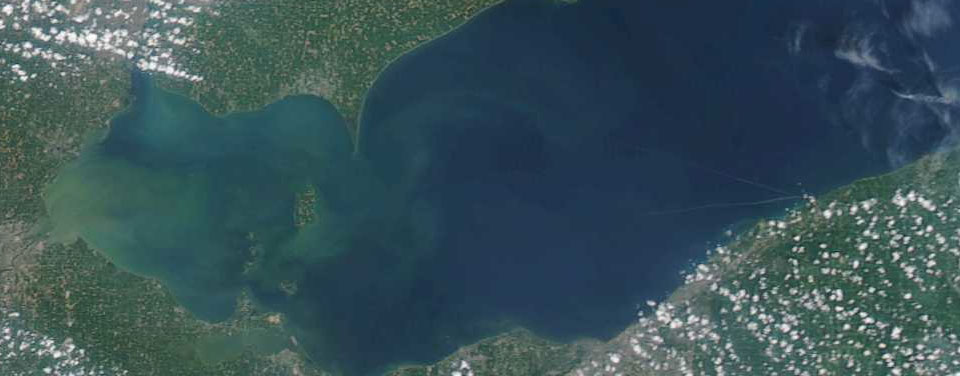NOAA Forecasts Support Response to Lake Erie Harmful Algal Bloom
Bi-weekly bulletins track size, location, and movement of blooms.

HAB Health Hazard
A satellite image of Lake Erie from Aug. 10, 2014, showing green discoloration in the water due to a large harmful algal bloom (HAB).
NOAA scientists continue to issue timely forecasts to aid in the response to a bloom of cyanobacteria that contaminated drinking water in Lake Erie on Aug. 2, which left nearly 400,000 people in Ohio without drinking water for two days.
In response to requests from Ohio agencies, NOAA also increased the frequency of Lake Erie Harmful Algal Bloom Bulletins from once to twice a week. These bulletins track the size and location of blooms and predict their movement until the bloom season ends in the fall. The August 1 edition of this bulletin caught the intensification of this bloom and enabled Toledo to prepare for a potential hazard.
NOAA issued a seasonal HAB forecast for Lake Erie on July 10, predicting larger than average blooms that will peak in September. Harmful algal blooms were common in western Lake Erie between the 1960s and 1980s. After a lapse of nearly 20 years, blooms have increased over the past decade in response to increased phosphorus in the lake.
NOAA's National Centers for Coastal Ocean Science and Great Lakes Environmental Research Laboratory produce the bulletins, using data from Ohio Sea Grant, Ohio State University, the University of Toledo, Ohio EPA, and regional partners.